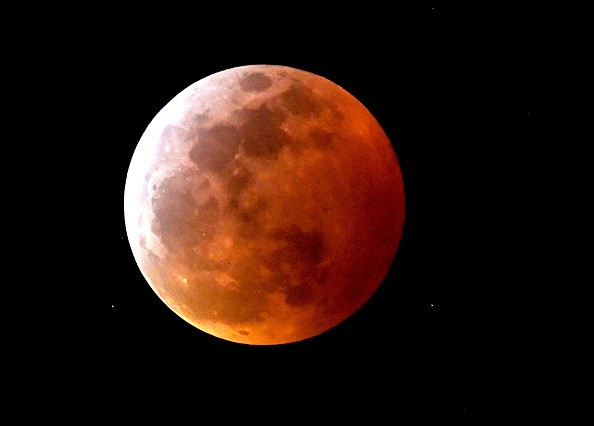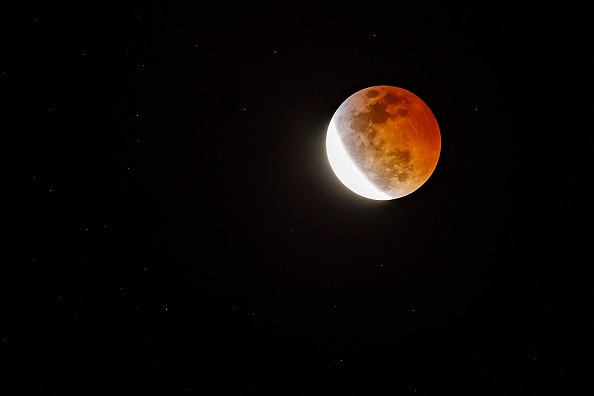According to astronomers, next week a supermoon will merge with a lunar eclipse, making our natural satellite look bigger and redder than normal.

The Super Blood Moon
The Super Blood Moon called that as the total lunar eclipse takes place when the moon is at its nearest point to Earth, will get to its apex brightness on May 26 at 23:32 BST. The eclipse will begin at 12:18 BST on May 26, but won't be clear from the UK as the moon will be beneath the horizon. However, sky gazers across much of Australia, the US, and parts of South America can behold the moon transform to red for 14 minutes.
The upcoming partial lunar eclipse to be hardly seen from the UK is in November, then afterward a total lunar eclipse in 2022, according to the Royal Observatory Greenwich. The full moon that takes place in May is called the Flower Moon, given the name due to the fact that flowers are bound to come into bloom in May.
A total lunar eclipse, just like the one that will be detectable in the US next week, is called a Blood Moon because it's more reddish in color than a non-eclipsed moon.
Places the Super Blood Moon Will Be Detectable
When the Moon is full and at its nearest point to Earth in its not completely circular orbit, it is referred to as a Super Moon and when a Super Moon takes place alongside an eclipse is called a Super Blood Moon - this moon's full name is a Super Blood Flower Moon. And also being detectable across most parts of the US, people in Australia, western parts of South-East Asia, and South America should be able to witness the occurrence of the eclipse.
The Super Flower Moon will transform into a shade of red for 14 minutes during the eclipse, starting at around 12:18 BST (07:18 ET). This will take place a few hours after the moon gets to perigee, that is the nearest point to Earth in its orbit, making it look larger than a typical full moon. Sadly for people in the UK, the moon will be below the horizon when the eclipse occurs.

Total Lunar Eclipse
According to Royal Observatory Greenwich astronomers, a lunar eclipse takes place two to five times a year, with a total eclipse occurring every two to three years. A total lunar eclipse, like this one, takes place when the Earth comes between the sun and the moon and the Earth's shadow totally covers the moon.
It transforms to a shade of red when the eclipse gets to totality. The UK will be able to witness its next total lunar eclipse, on May 16, 2022, together with Europe, South America, North America, and parts of Africa.
Related Article : Supermoon Effects: Unexpected Twist of This Amazing Phenomenon, Including Flooding
For more news, updates about the super blood moon and similar topics don't forget to follow Nature World News!
© 2025 NatureWorldNews.com All rights reserved. Do not reproduce without permission.





